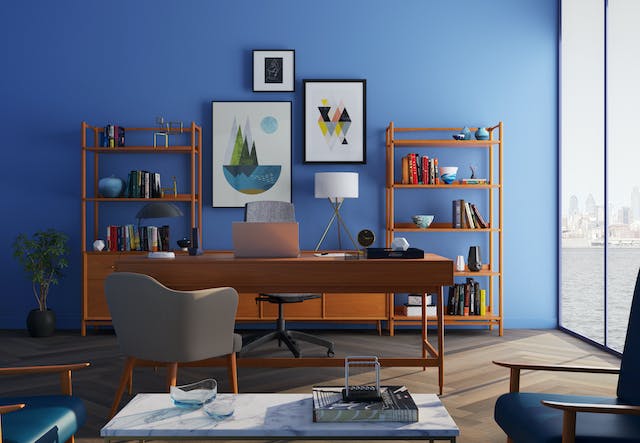Remote work is becoming increasingly common – creating an effective home office is more important than ever. Creating a space that fosters productivity doesn’t have to be complicated or expensive. Here, we’ll explore key elements to consider when setting up your home office, ensuring it’s a place where efficiency and comfort go hand in hand.
Ergonomic Furniture
The cornerstone of any productive home office is ergonomic furniture. A comfortable chair that supports your posture and a desk at the right height is essential. These pieces of furniture are investments in your health and productivity.
While it might be tempting to skimp on these, remember that the hours you spend in your home office justify the expense. For DIY enthusiasts, consider building your custom desk by upcycling an old one. Quality materials for such a project can be sourced from building merchants, ensuring durability and a personalized touch to your workspace.
Lighting: Brightening Your Work Environment
Good lighting is crucial. Natural light is always preferable, so position your desk near a window if possible. However, in spaces where natural light is limited, invest in quality artificial lighting that reduces eye strain. A combination of overhead lighting and task lighting, like a desk lamp, can create a well-lit, productive workspace. Studies have shown that lighting can have a significant impact on mental health and performance depending on the type of light in a working environment.
Minimizing Distractions
In a home environment, distractions are aplenty. One way to minimize them is by choosing a quiet corner of your house for your office space. If that’s not possible, consider noise-canceling headphones or room dividers. Keep your workspace clutter-free. A tidy desk can help maintain a clear mind, making it easier to focus on the task at hand.
Technology: Ensuring Connectivity and Efficiency
In our digital age, the right technology is vital for a home office. Ensure you have a reliable internet connection and the necessary software to do your job effectively. Organise cables and tech accessories to keep your space neat and functional. Regularly update your software and back up important data to avoid tech-related disruptions.
Personal Touches
While functionality is key, adding personal touches to your home office can boost morale and creativity. That could be anything from plants and artwork to a personalized calendar. It could also be a personal DIY project – one you put a lot of effort into by going to building merchants, designing it to perfection, and crafting it with love. These elements can make your home office a more enjoyable and inviting space.
Flexible Design
A home office should be able to adapt to your changing needs. Modular furniture or adjustable shelves can offer flexibility and allow you to reconfigure your space as required. This adaptability is particularly important in a home office, where the line between professional and personal space often blurs.
Creating the best home office setup is a balance of practicality, comfort, and personal style. It’s about making a space that not only helps you work efficiently but is also a place you enjoy spending time in. Remember, a productive home office reflects your needs and helps you achieve your best work. With the best setup, working from home can be a comfortable and fruitful experience.







